




Welcome to the future of Dixie State University. Included in the pages that lie ahead are ambitious but attainable goals, strategies, and desired outcomes that will guide the growth of the institution for the next five years. Trailblazing Distinction, our 2020-2025 strategic plan, not only includes rigorous action plans that will elevate the university’s offerings and set us apart from any other institution in the nation, but also provides specific strategies to help us implement initiatives that will be a great benefit to our students.
The success of our last strategic plan, Dixie 2020: Status to Stature, which was made possible through the dedication of our incredible University community, has proven that we can facilitate important growth in the institution and make a remarkable impact on our students’ lives. In fact, through Status to Stature, we increased student retention by 4.3 percent, added 112 academic programs, invested in countless professional development opportunities for faculty and staff, enhanced our support for inclusion and equity campuswide, strengthened our connection to the community, and established the strong Trailblazer identity for Dixie State Athletics.
I am excited to build on this momentum by implementing the strategies included in Trailblazing Distinction. This plan will lay the foundation necessary for the University to be open, inclusive, comprehensive, and polytechnic while continuing to provide unique learning experiences, valuable resources, and unprecedented “active learning. active life.” opportunities. Dixie State will make learning accessible by removing barriers and providing access to everyone as part of our dedication to being an open and inclusive university that serves the needs of our community. Furthermore, by featuring active and applied learning experiences in education, science, technology, engineering, health sciences, humanities, business, and the arts that integrate liberal arts curriculum, we will offer a comprehensive polytechnic education that prepares our graduates to make a significant impact on our world.
As you look through the following highlights of our 2020-2025 strategic plan, it will quickly become evident that great things are on the horizon for Dixie State University. To read the complete strategic plan, please visit strategicplanning.dixie.edu. By working together to accomplish the goals included within Trailblazing Distinction, we will ensure that every day is a great day to be a Trailblazer.
Richard B. Williams President of Dixie State University
Dixie State University is an open, inclusive, comprehensive, polytechnic university featuring active and applied learning to advance students’ knowledge and skills while fostering competent, resilient, lifelong learners to succeed in their careers and personal lives as creators, innovators, and responsible citizens.
Dixie State University aspires to be a premier open, inclusive, comprehensive, polytechnic university distinguished through an ethos of innovation and entrepreneurship and the achievement of exceptional student learning and success.


Excellence as an open, inclusive, comprehensive, polytechnic university that distinguishes DSU from other universities
Achievement of learning outcomes and the attainment of an academic award or other educational goal, including holistic personal development
A safe, tolerant and welcoming community with diverse identities, ideas, and beliefs who collaborate and learn through open and civil discourse
Creative thinking and acting across boundaries to solve complex problems both individually and collaboratively
An open culture grounded on principles of honesty, integrity, sharing, transparency, accountability, mutual respect, and freedom of inquiry
Effective leadership of civic, educational, economic, and cultural entities and initiatives to transform communities
Mutually beneficial partnerships that engage and integrate local and global resources into learning experiences, with a special emphasis on Southern Utah
Responsive to local and regional needs and opportunities through institutional innovation and entrepreneurship
Commitment to sharing, collaborating, transparency, and community
Open access
Open educational resources
Open educational practices
Recognition of formal and nonformal learning
Collaboration with networks and community
Open science, scholarship, innovation, and entrepreneurship
Equitable access and opportunity for diverse individuals to work, learn, and succeed
Recruitment and retention of diverse faculty, staff, and students
Inclusive pedagogy/andragogy
Enabling of institutional support services
Engagement with community services and human networks
PRINCIPLES OF COMPREHENSIVE
Teaching and research facilities
Undergraduate programs
Graduate programs and professional schools
Diverse programs and people
Community engagement
PRINCIPLES OF POLYTECHNIC
Active and applied learning
Career focus
Authentic learning through industry partnerships
Integrated liberal arts and science with STEM intensive programming



Located amid dramatic natural beauty
Year-round sunshine and warm weather
World-class outdoor recreation opportunities
Fastest-growing metropolitan area in America
Located adjacent to Zion National Park, Grand Canyon National Park and Las Vegas

Open enrollment and education
Career-ready graduates
Most affordable university in Utah

One of the safest universities in America
Enriched student life experiences
Exceptional value
Learning is active, applied, authentic, and inclusive
Faculty and staff commited to student learning and success
Ethos of innovation and entrepreneurship
Deep community engagement
Institutional momentum
Establish regionally distinctive academic programs by integrating the tenets of open education, inclusion, comprehensive, and polytechnic while sustaining the prominence of a liberal education as the foundation of exceptional student learning and success.
Co-chairs: Dr. Lauren DiSalvo and Dr. McKay Sullivan

Policies, practices, and systems will be implemented that establish an integrated ecosystem of open and inclusive teaching and learning complemented by student-centered support services to foster exceptional student learning and success.
Students will experience a blend of curricular and co-curricular experiences consistent with peer comprehensive polytechnic universities.
All associate degree students will complete at least one high-impact experience and all baccalaureate students will complete at least two highimpact experiences, one within the first 30 credits and the second during the final 60 credits.


All tenure line faculty will be engaged in an ongoing program of innovation, scholarship, or creative activity, with a preference toward collaborative work with students. Non-tenure line faculty will be encouraged to engage in scholarship or creative activity to support student learning.
All academic colleges and the majority of academic departments will collaborate with community, regional, national, or global organizations, industries, and professionals through formal and informal advisory groups and networks that provide insights, currency, and resources, and inform career preparation.
Implement policies, practices, systems, and support services aligned with open education and inclusion.
Modify curricular and academic co-curricular programs to become a comprehensive polytechnic university.
Develop or modify academic award programs to be more career focused.
Expand collaborative and interdisciplinary innovation, scholarship, research, and creative activity.

Develop, support, and evaluate transdisciplinary and inclusive high-impact practices.
Strengthen the academic impact and flexibility of the general education program.
Focus faculty professional learning on the core instructional methods, student learning, and student success.
Expand educational opportunities for diverse lifelong learners.
Expand credentialing and certification of formal and nonformal learning.
Expand student engagement and co-curricular opportunities that support “active life” through social education and holistic student development.
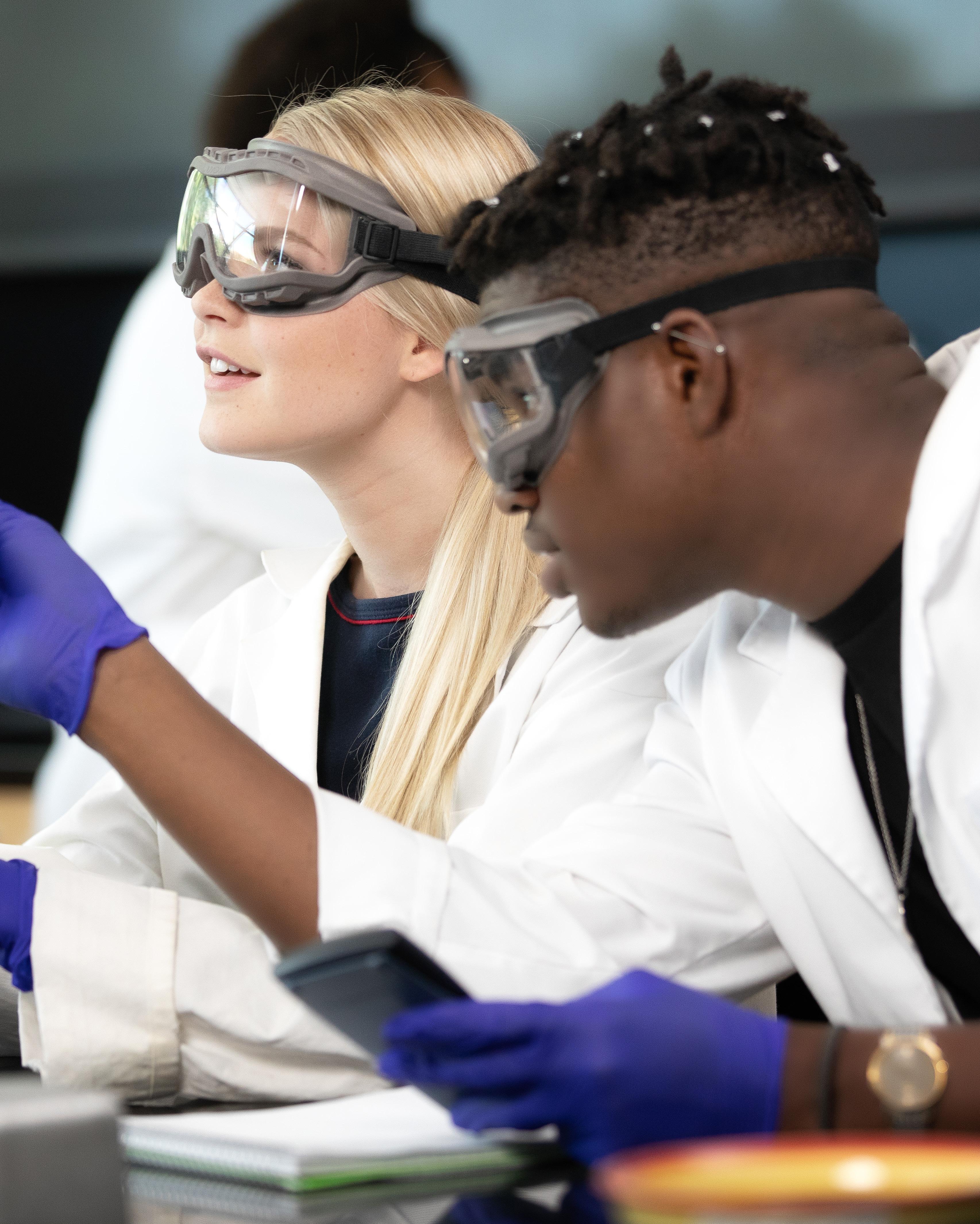
Increase university enrollment to 16,000 students through strategic, innovative, and data-informed initiatives and marketing focused on inclusive and affordable lifelong learning opportunities, with a special emphasis on student retention, academic success, and completion by identifying and lowering critical economic, technological, geographical, and institutional barriers.
Co-chairs: Ms. Darlene Dilley, Mr. Ryan Hobbs

Increase total university enrollment to 16,000 students.
Increase the number of adult students to 3,500.
Increase annual new-student enrollment to 5,000.
Increase total enrollment at DSU education centers by 100% from fall 2020.


Increase student retention rates to the average rate for open-admission four-year universities.
Increase the graduation rate to make it meet or exceed the national average of open-admissions four-year universities.
Be recognized as one of the most affordable, financially accessible, and best valued public universities in Utah and the surrounding region.
Establish a comprehensive financial success program for students.

Redesign the highest-enrolled gateway courses that have the most nonpassing grades using open educational resources (OER).
Promote brand awareness and the new DSU mission as an open, inclusive, comprehensive, polytechnic university.
Expand programming and services for adult learners.
Expand recruitment markets and initiatives by targeting new geographic areas and under-represented populations.
Improve the quality of advising and connections with student success programs through predictive analytics.
Provide supportive and meaningful experiences that positively impact the retention and persistence of first- and second-year students.
Expand and improve academic pathways for transfer students.
Expand programming and community partnerships at new and existing DSU education centers within the region.
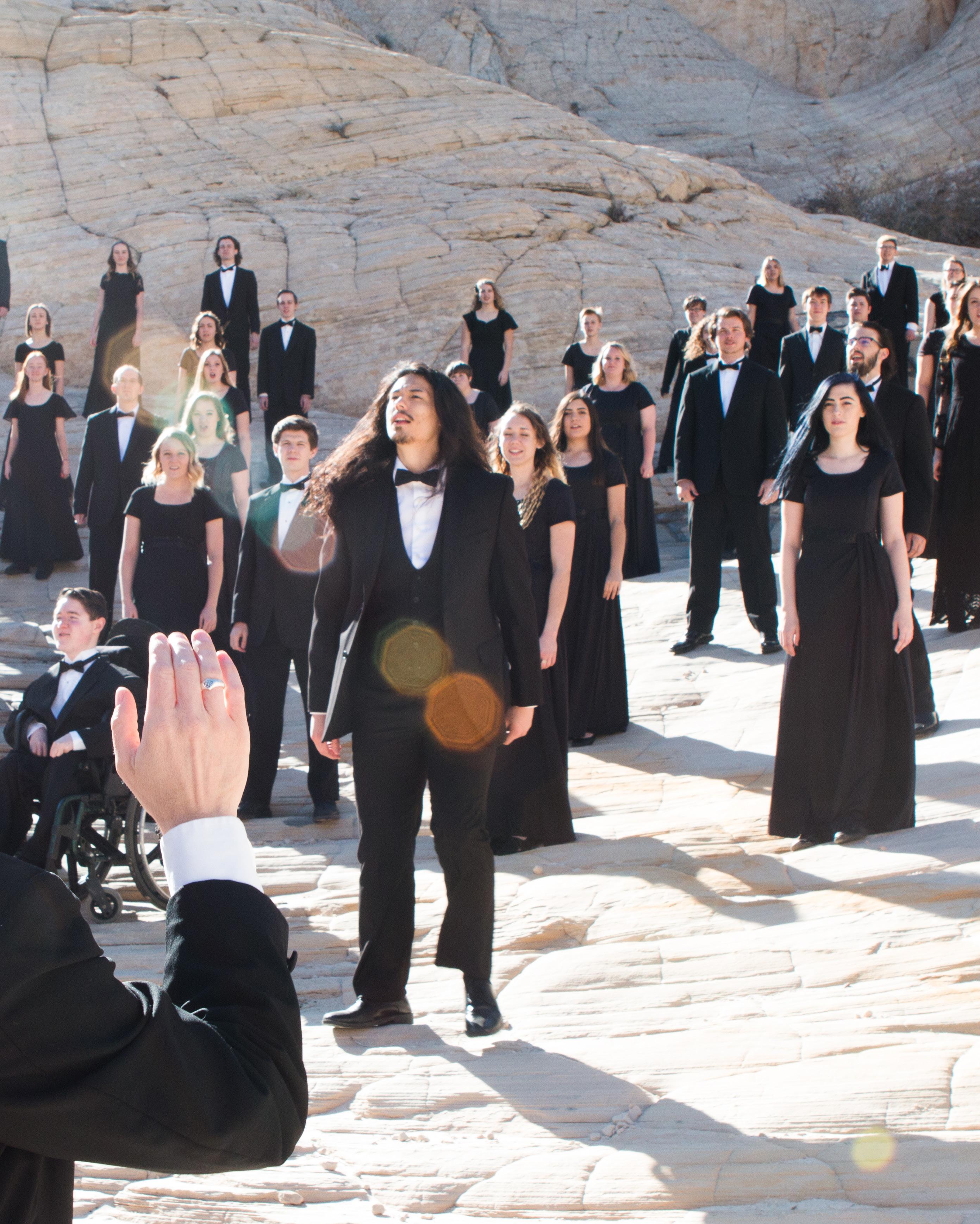
Build a culture of open, collaborative, and evidencebased performance management to optimize financial, facility, human, and information technology capital to elevate capacity and effectiveness.
Co-Chairs: Mr. Jason Browning, Mr. Courtney White

Institutional effectiveness will be positioned as a central source of reliable data by deploying analytics and visualization tools, effective data governance, and data management policies and strategies.
Establish enhanced business intelligence capability to increase the effectiveness of enrollment, fiscal, and academic planning and resource allocation.
Create a formal plan to regularly assess and maintain the central and satellite campus physical infrastructure.
Purchase the Desert Color property and integrate it into the campus master plan.
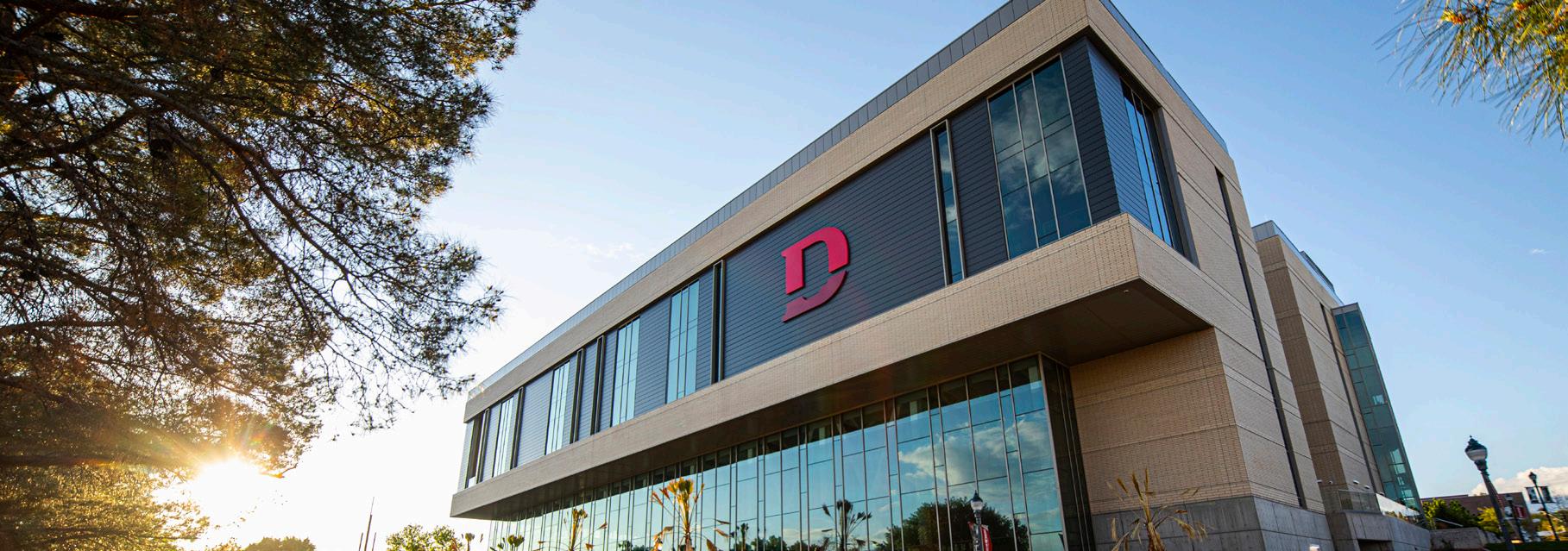
Deploy standardized equipment and controls in all technologyenhanced classrooms and meeting spaces using a sustainable refresh/ replacement cycle.
University fundraising capabilities will be upgraded, and external fundraising activities and revenues will be substantially increased.

Design, develop, and deploy an infrastructure that facilitates data-informed decision making.

Provide access to reliable data through the use of dashboards, visualizations, and other tools.
Formalize and assess the operations of Dixie State University Foundation.
Enhance the University and Foundation’s financial position through fundraising and partnerships.
Optimize course scheduling and program offerings to efficiently serve students and address market needs.
Maximize the use of available funding to improve facility maintenance and accessibility.
Develop a strategy to integrate the Desert Color campus into the operations of Dixie State University.
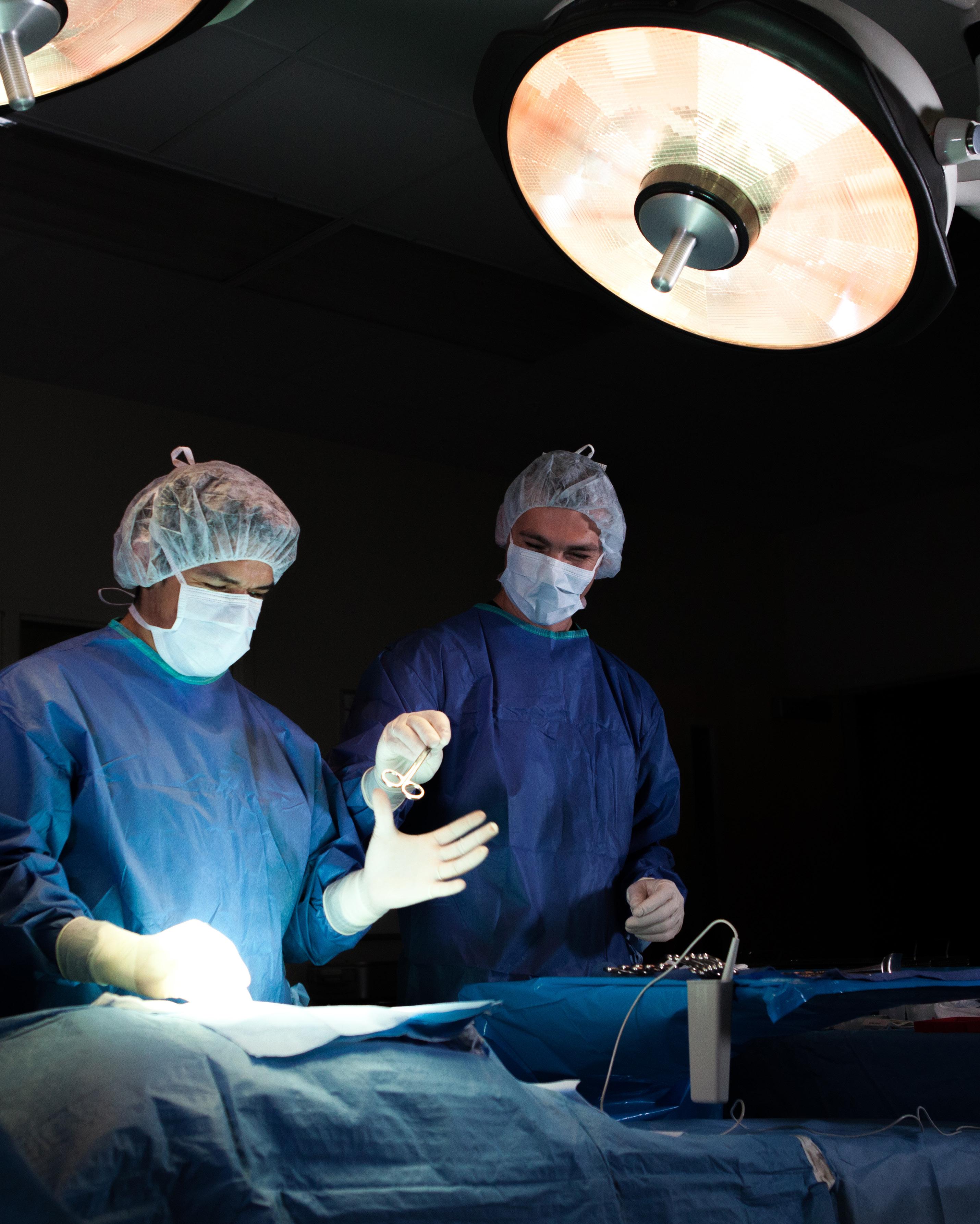
Partner with cities in Washington County and Kane County to blend University educational resources with regional public and private spaces, human networks, organizations, and resources to formally designate and operate Dixie State UniverCity, an open, integrated, and vibrant Southern Utah learning ecosystem that provides exceptional learning opportunities and social and economic impact.
Co-chairs: Dr. Nancy Hauck, Mr. Henrie Walton

Establish a regional learning collaborative among DSU and entities within Washington and Kane counties to improve learning opportunities for DSU students and residents and provide greater access to university resources.
Establish formal partnerships for all academic colleges with local, regional, national, or global organizations to provide students with highimpact learning opportunities.
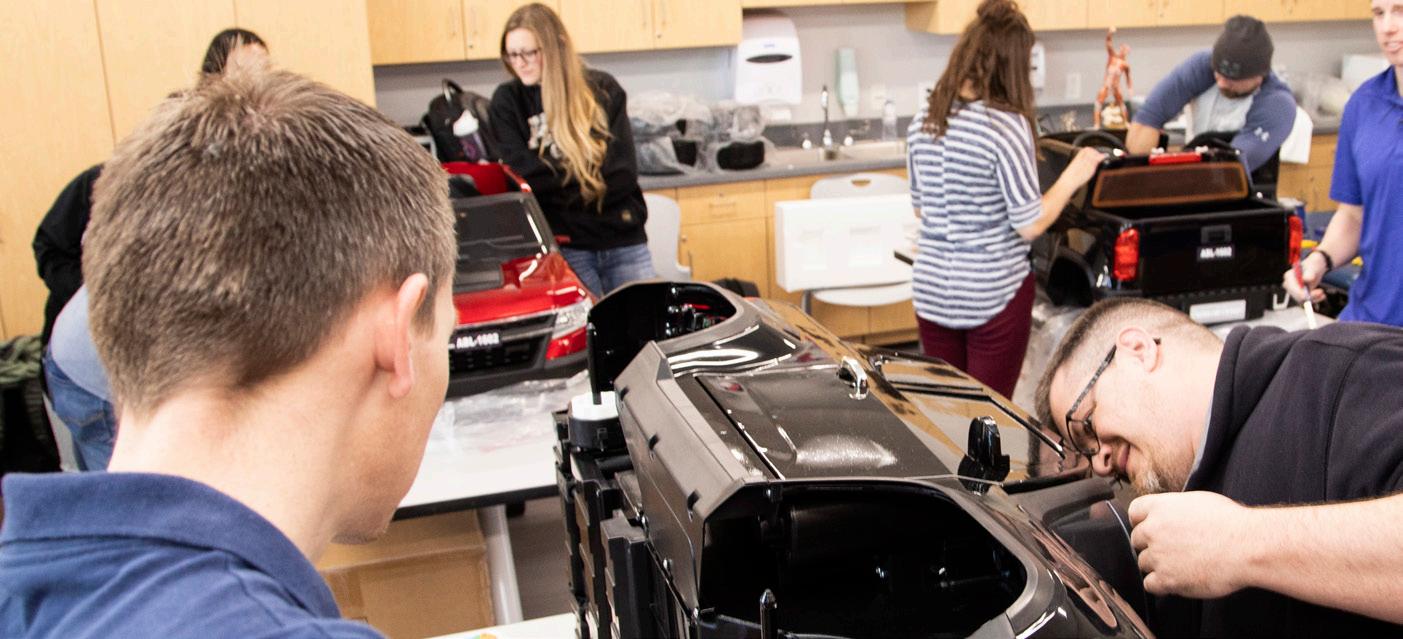
Establish partnerships with local, state, national, and global governments and civic organizations to engage in and contribute to local, state, national, and global conversations about policy, democracy, and civic life.
Partner with surrounding municipalities to foster a “college town” environment that creates social and cultural opportunities for Southern Utah residents and DSU students, faculty, and staff.

The Office of Community and Global Engagement will implement a communication plan to promote community, global, and civic engagement efforts.
At least 10 new companies incubated at Atwood Innovation Plaza will be established annually in Washington and Kane counties, yielding a minimum of 260 new jobs annually.
Establish a formal learning collaborative between DSU and entities and individuals within Washington and Kane counties.
Establish academic work in community, professional, global, and civic engagement as a distinguished aspect of student learning and faculty teaching, service, and promotion.
Connect each academic college with partnerships to provide students with highimpact, active, applied, and authentic learning in community, global, and civic engagement.
Make civic engagement a tangible element of campus and community life that prepares students for responsible citizenship and positively impacts the community.
Partner with St. George City, Washington County, and other localities to promote DSU within the community and increase social and cultural opportunities for residents, students, faculty, and staff.

Implement a communication plan that promotes community, global, and civic engagement.
Expand and promote programs within Atwood Innovation Plaza to serve campus and community needs for innovation and entrepreneurship and catalyze the Southern Utah regional economy.

Establish policies, systems, and practices to recruit and retain diverse and ambitious faculty and staff from across the nation who bring new ideas, possess values and career aspirations aligned with the Mission and Vision, and are inspired to build a premier open, inclusive, comprehensive, polytechnic university.
Co-Chairs: Dr. Michelle McDermott, Ms. Tiffany Draper

The composition of the new faculty and staff will reflect the multidimensional diversity of the region and state and at least 60% of new full-time faculty will have come from another state and 5% will have been born in another nation.
Deploy an intensive and structured onboarding process for new faculty and staff beginning at the time of initial appointment and extending through the end of the third year of employment for full-time faculty and end of the second year for staff members.
By 2025, 90% of new full-time staff hired in 2021 and beyond will be retained for at least three years and 90% of new full-time faculty will successfully complete their intermediate review. All employees will report high levels of job satisfaction and DSU will be included in the “Great Colleges to Work For” program.
By 2025, a professional learning program will be fully implemented to provide employees with access anytime, anywhere to formal and nonformal high-value resources and other programs designed to advance their talents and provide opportunities for career advancement.
By 2025, employee cohesion will be significantly elevated through a campus culture of open communication, collaboration, sharing, and teamwork. Employees will be incentivized and recognized formally and informally for their achievements and contributions to mission and vision fulfillment.
By 2025, part-time faculty life will be elevated by the University incorporating practices such as part-time faculty representation, onboarding programs, professional learning and growth opportunities, and competitive compensation.
By 2024, effective offboarding policies, systems, and practices will be deployed for employee resignation, termination, or retirement.
By 2023, all full-time positions will be paid at least current market median for the Carnegie Baccalaureate benchmark group and by 2025, all full-time positions will be paid at least 95% of the market median for the Carnegie Master’s benchmark group. By 2025, increase part-time staff wages will be increased by 10% from the 2020 baseline.
By 2022, 90% of full-time employees will be able to identify and support the mission and its elements, vision, and values, and be inspired to build a premier open, inclusive, comprehensive, polytechnic university.
Create preferred faculty and staff profiles and widen recruitment pools to recruit ambitious people committed to an open, inclusive, comprehensive, polytechnic university.
Review and enhance policies and hiring protocols to expand employee diversity and establish a culture of inclusive excellence.
Evaluate, modify as needed, and formalize structured onboarding and offboarding programs for faculty and staff.
Promote employee health and wellness through customized programs and activities.
Design and deploy initiatives to elevate employee satisfaction and engagement.
Establish DSU as best in class for talent and leadership development and career advancement.
Elevate employee cohesion through intentional programs, activities, and communications.


Ms. Sheila Bastian, Executive Assistant to the Provost/VPAA
Dr. Jason Boothe, Director of Athletics
Mr. Jason Browning, Executive Director, Institutional Effectiveness
Mr. Brooks Burr, Development Officer
Mr. David Clark, Chairperson, DSU Board of Trustees
Dr. Lauren DiSalvo, Faculty, College of the Arts
Ms. Darlene Dilley, Assistant Vice President, Enrollment Management
Ms. Tiffany Draper, President, Staff Association
Ms. Taylor Godfrey, President, DSUSA
Dr. Kristy Grayson, Faculty, College of Business
Ms. Jyl Hall, Director, Public Relations
Dr. Nancy Hauck, Associate Provost, Community and Global Engagement
Mr. Ryan Hobbs, Executive Director, Digital and Extended Learning
Dr. Randy Jasmine, Faculty, College of Humanities and Social Sciences
Dr. Michael Lacourse, Provost and Vice President, Academic Affairs
Dr. Michelle McDermott, Past-President, Faculty Senate
Dr. Erin Ortiz, Director, General Education
Mr. Travis Rosenberg, Executive Director, Human Resources
Dr. McKay Sullivan, Faculty, College of Science, Engineering and Technology
Dr. Tasha Toy, Assistant Vice President, Campus Diversity and Chief Diversity Officer
Mr. Henrie Walton, Special Assistant to the President for Government and Community Affairs
Mr. Courtney White, Chief of Staff to the President
Dr. Linda Wright, Faculty, College of Education
AASCU-Penson Center for Professional Development
Dr. John Welty, Senior Associate
Dr. Dene Thomas, President Emerita, Fort Lewis College
